A necessary introduction
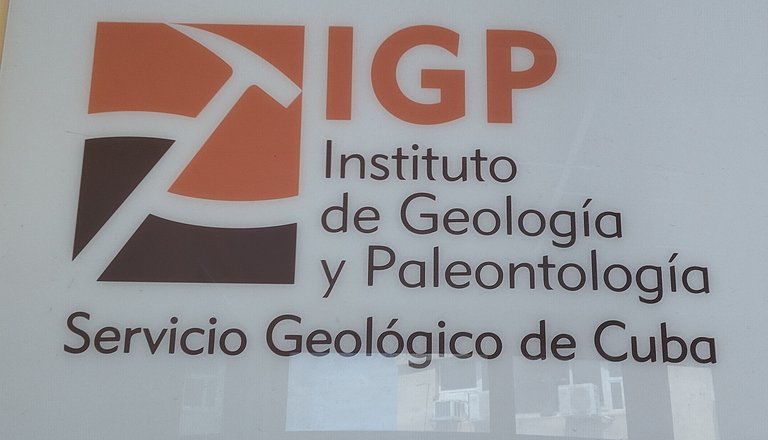
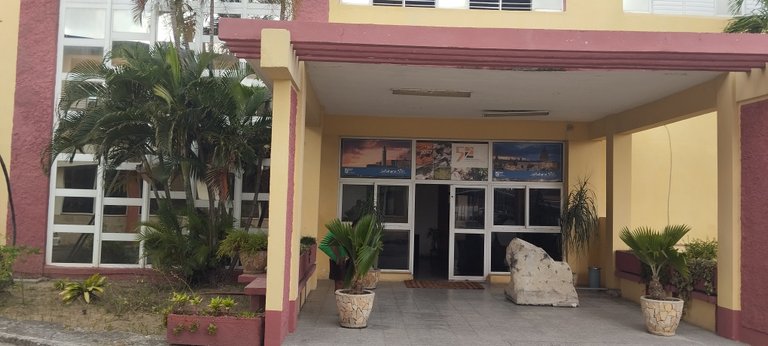

It is a research center of excellence and is the institution in charge of directing the geological activity of the country and one of the leading centers in the area of Geosciences.
On this occasion I want to show you my tour of this place so important for the socioeconomic development of the country.
It is true that it is not a tourist trip, but I had fun, I learned and I left with the desire to continue learning about Earth Sciences and, for me, it is the most important thing I can live.
For this reason, I apologize if you find the trip boring or too technical.
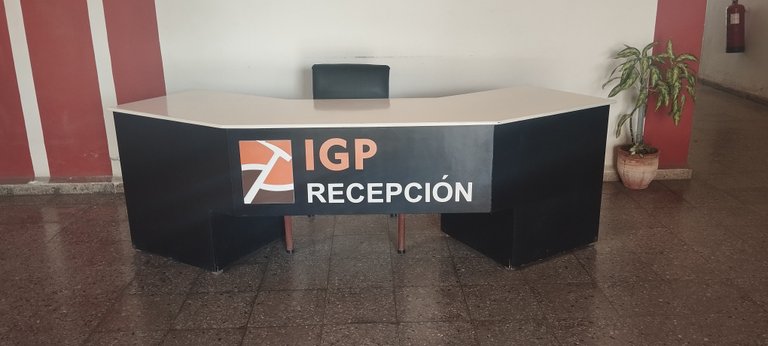
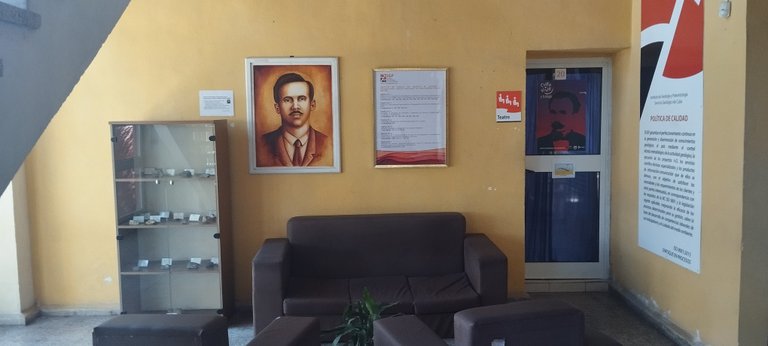

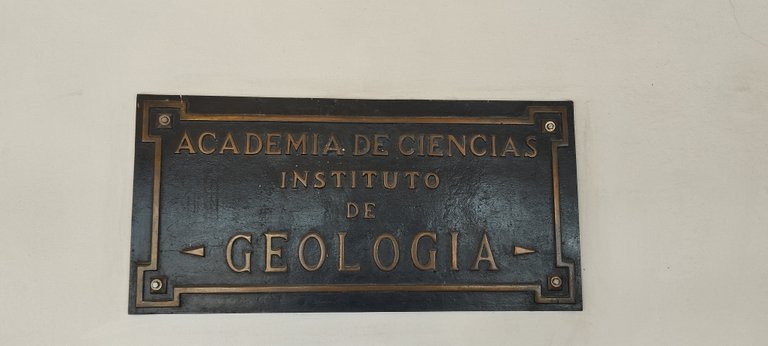
Areas of the center
The center has a central building with three floors and, in completion, there are two new buildings that will be used for the paleontological sample laboratories and a Geological Heritage area that has the Mario Sánchez Roig Museum as one of the most popular places in the institute.
In the central building we have three floors. On the first floor is the reception area for incoming visitors: a library, an archive belonging to the Knowledge Management Department.
On the second floor are the departments of Geological Activity Assurance, Economics, Human Resources and Mineral Resources Prospecting.
On the third floor are the departments of Regional Geology, Geoprocessing, Geological Cartography, Mineralogy and Environmental Geology, belonging to the Directorate of Research, and also the General Management.
Other important areas of the center are the Museum, the mineral laboratory and the Karpinsky classroom, donated by the Institute of the same name, belonging to the Federal Republic of Russia.

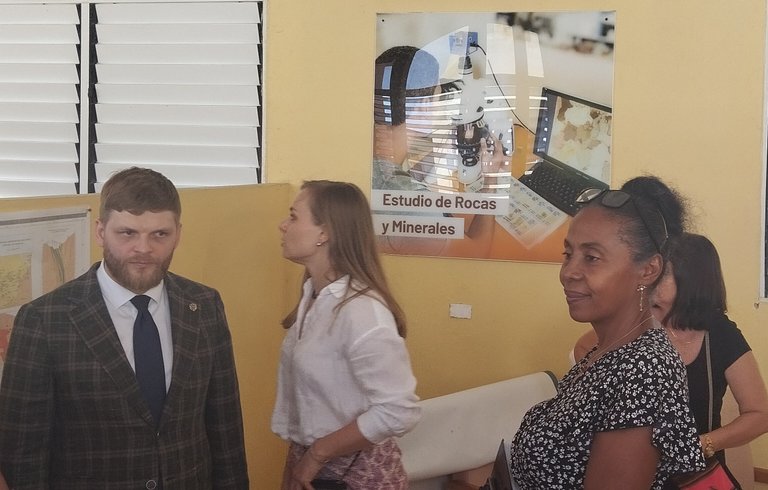
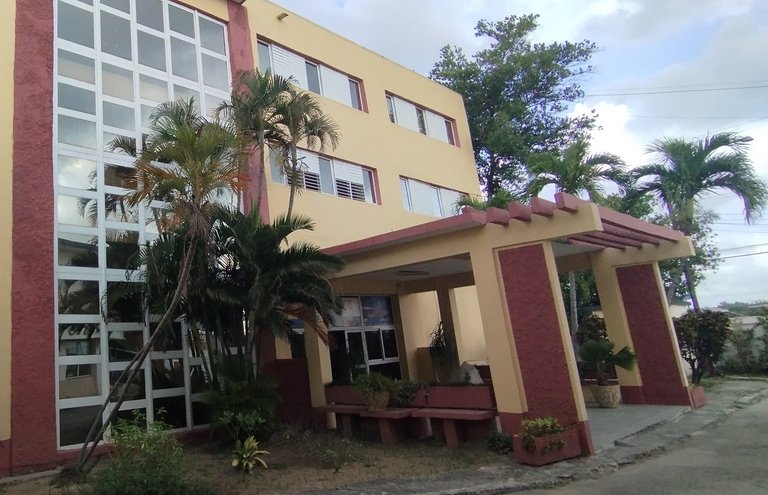
Main areas of the institute's work
As the researchers explained to us, science management is the fundamental element that is carried out and, among the fundamental themes that the projects develop, are:
- Mineral Resources.
- Geoenvironment and Geological Hazards.
- Geological Cartography
- Geological Data Bank.
- Documentary Geological Heritage.
- Mineralogy and Petrography of Cuba.
- Paleontology and Museum.
- Mean Sea Level Rise.
- Geophysics.
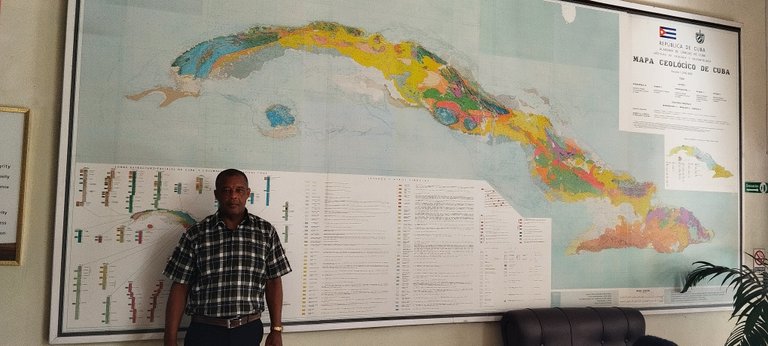
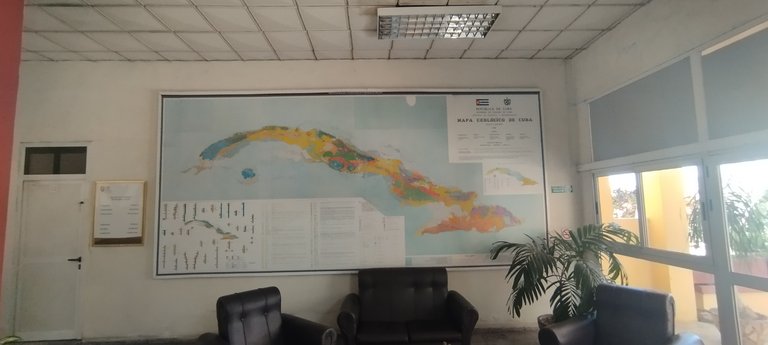
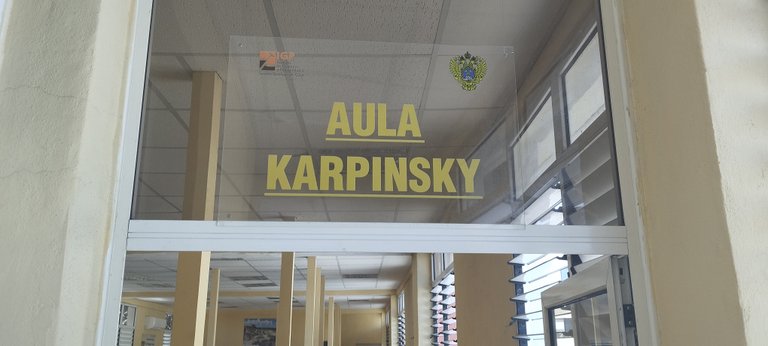
History, main contributions and scientific results
In conversations with the general director, we were able to learn that the center has more than 57 years dedicated to geological research (since 1967) and there have been several approved projects, articles and books published, international collaborations and many other achievements. Among the most important ones they told us about:
- International collaboration with more than 57 countries,
- Participation in national and international events presenting the main results of the center.
- Implementation of the methodological instruction for the geological cartography of Cuba at 1:50 000 scale.
- The updating of the map of the Quaternary deposits of the emerged territory of Cuba at scale 1: 250 000 in digital format.
- The estimation of the Coastal Vulnerability Index (IVC) before the rise of the average sea level at scale 1:50 000 of the northwestern coastal zone of Cuba.
Participation in expert groups of the Association of Geological and Mining Services of Ibero-America (Regional Geology and Geological Cartography, Geological Heritage, Geological Museums, GSIG Geoscientific Information Systems). - Elaboration of the Geological Map of Cuba, at a scale of 1:250 000, which is the main scientific result of the center.
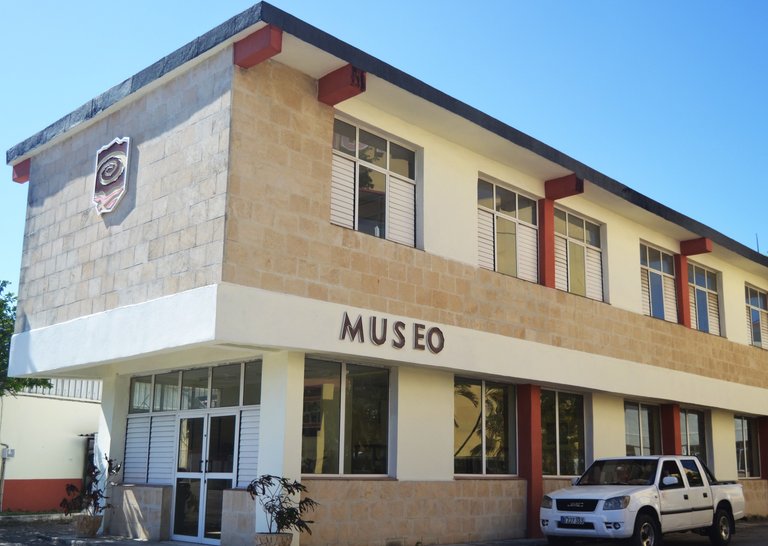

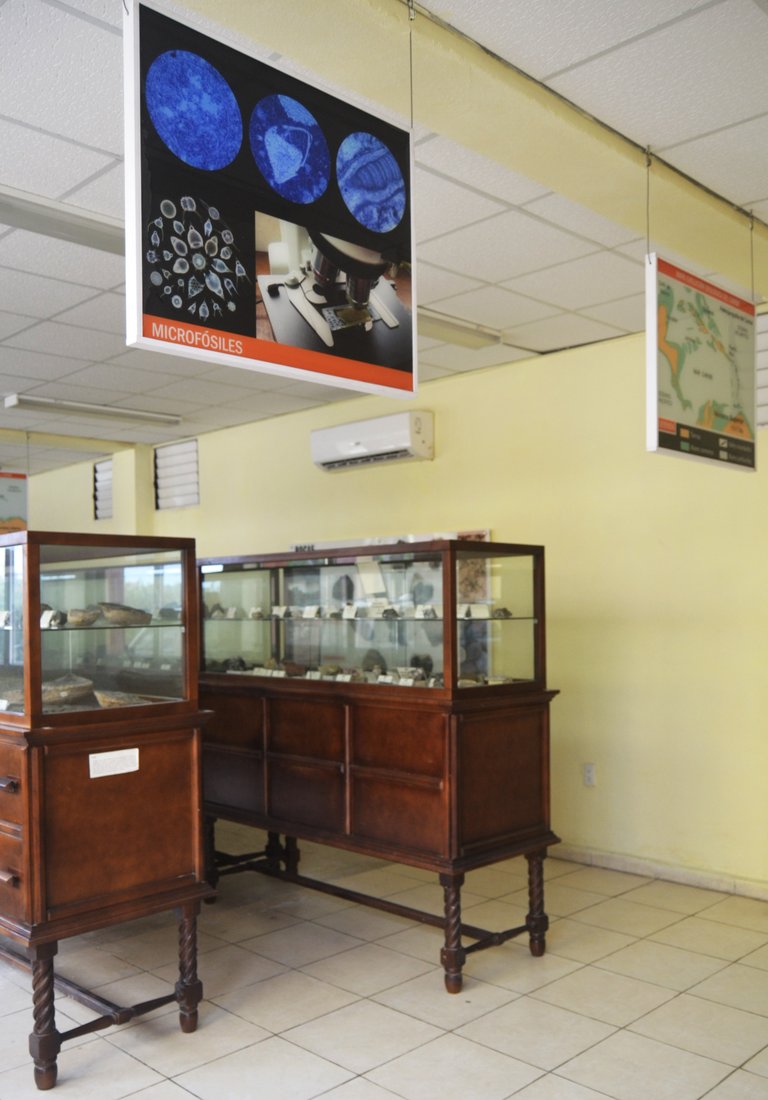
A final comment
There are many things left to show and say, but I feel that the publication was getting quite long.
I must say that Socrates' phrase “I only know that I know nothing” has never been so well said as it is now, because there is a world I still have to know about our origin, evolution and development as human beings.
Note: The photos were taken with my Samsung J2 phone.
I used the translator DeepL Translate.
ESPAÑOL
Una introducción necesaria
Llegar al Instituto de Geología y Paleontología de Cuba, es como estar en el centro de la tierra porque cada uno de sus investigadores te puede transportar a cualquier época del planeta y explicarte las características de esa época, los animales que había, los minerales existentes, los tipos de climas y muchos otros elementos que, para muchas de las personas es desconocida.
Es un centro de investigación de excelencia y es la institución que se encarga de dirigir la actividad geológica del país y uno de los centros de vanguardia en el área de las Geociencias.
En esta ocasión les quiero mostrar mi recorrido por este lugar tan importante para el desarrollo socioeconómico del país.
Es cierto que, no es un viaje turístico, pero, me divertí, aprendí y me fui con ganas de seguir conociendo de las Ciencias de la Tierra y, para mí, es de lo más importante que puedo vivir.
Por tal razón, pido disculpas si el viaje les resulta aburrido o demasiado técnico.
Áreas del centro
El centro tiene un edificio central con tres plantas y, en terminación, están dos nuevas edificaciones que serán destinadas a los laboratorios de muestras paleontológicas y a un área de Patrimonio Geológico que tiene al Museo Mario Sánchez Roig, como uno de los lugares más concurridos del instituto.
En el edificio central tenemos tres plantas. En la primera está la recepción para los visitantes que llegan: una biblioteca, un archivo perteneciente a la Dirección de Gestión del Conocimiento.
En la segunda planta están las direcciones de aseguramiento a la actividad geológica, Economía, Recursos Humanos y Prospección de Recursos Minerales.
Mientras, en la tercera planta están los departamentos de Geología Regional, Geoprocesamiento, Cartografía Geológica, Mineralogía y Geología Ambiental, pertenecientes a la Dirección de Investigaciones y también está la Dirección General.
Otras áreas importantes del centro son el Museo, el laboratorio de minerales y el aula Karpinsky, donada por el Instituto de igual nombre, perteneciente a la República Federativa de Rusia.
Principales áreas de trabajo del instituto
Según nos explicaron los investigadores, la gestión de la ciencia es el elemento fundamental que se realiza y, entre los temas fundamentales que desarrollan los proyectos, están:
•Recursos Minerales.
•Geoambiente y Riesgos Geológicos.
•Cartografía Geológica
•Banco de Datos Geológicos.
•Patrimonio Geológico Documental.
• Mineralogía y Petrografía de Cuba.
• Paleontología y Museo.
•Incremento del nivel medio del mar.
•Geofísica.
Historia, aportes principales y resultados científicos
En conversaciones con la directora general, pudimos conocer que el centro tiene más de 57 años dedicados a la investigación geológica (desde 1967) y varios han sido los proyectos aprobados, artículos y libros publicados, colaboraciones internacionales y muchos logros más. Entre los más importantes nos hablaron de:
•Colaboración internacional con más de 57 países,
•Participación en eventos nacionales e internacionales presentando los resultados principales del centro.
•La implementación de la instrucción metodológica para la cartografía geológica de Cuba a escala 1:50 000
•La actualización del mapa de los depósitos cuaternarios del territorio emergido de Cuba a escala 1: 250 000 en formato digital.
•La estimación del Índice de Vulnerabilidad Costera (IVC) ante el ascenso del nivel medio del mar a escala 1:50 000 de la zona costera noroccidental de Cuba.
Participación en grupos de expertos de la Asociación de Servicios Geológicos y Mineros de Iberoamérica. (de Geología Regional y Cartografía Geológica, de Patrimonio Geológico, de Museos Geológicos, de GSIG Sistemas de Información Geocientífica).
•Elaboración del Mapa Geológico de Cuba, a escala 1:250 000 que es el principal resultado científico del centro.
Un comentario final
Muchas cosas quedaron por mostrar y decir, pero, siento que la publicación se me hacía bastante larga.
Debo decir que nunca, como ahora, estuvo tan bien dicha la frase de Sócrates: “Solo sé que no sé nada”, porque es un mundo lo que me falta por conocer, sobre nuestro origen, evolución y desarrollo como seres humanos.
Nota: Las fotos fueron tiradas con mi teléfono Samsung J2.
Utilicé el traductor DeepL Translate.
You can check out this post and your own profile on the map. Be part of the Worldmappin Community and join our Discord Channel to get in touch with other travelers, ask questions or just be updated on our latest features.
Thank you very much for the congratulations and I appreciate your words. It is an honor to be part of the community. Happy Monday and have a great week. Cheers and best regards.
Thank you very much for this vote which is a recognition of our work. I wish you an excellent Monday and a better week. Greetings and best regards.
You're welcome!